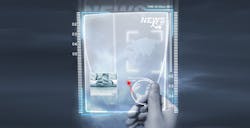At the second annual CHI Digital PCR Conference in San Diego this week 12 scientists using Bio-Rad's Droplet Digital PCR systems have highlighted ddPCR applications that have advanced their research. They have been making the case that ddPCR technology provides greater precision, reproducibility, and sensitivity than real-time PCR approaches in applications including target quantification and the detection of genomic alterations such as copy number variation and rare cancer mutations.
In the past, tools developed for such applications have been limited by their inadequate precision and/or lack of sensitivity for detecting rare species. But using ddPCR technology, researchers have focused on more of these “needle-in-a-haystack” problems. The ddPCR technology has already had an important impact on medical research.
“The HIV community, for instance, has benefited from ddPCR's ability to make more sensitive measurements, which can also depend on its attribute of increased precision,” says George Karlin-Neumann, PhD, scientific affairs director at Bio-Rad's Digital Biology Center. “To have greater sensitivity down to very low levels depends on being able to distinguish something from nothing. You need a system that inherently has very low noise.”
One example of the clinical potential of ddPCR systems is the work of Matt Strain, MD, PhD, and Douglas Richman, MD, of the Center for AIDS Research at the University of California, San Diego School of Medicine, who validated the technology's performance in HIV provirus detection. Subsequently, in collaboration with Deborah Persaud, MD, of Johns Hopkins Children's Medical Center in Baltimore, the researchers used the technology to demonstrate that an infant born with HIV was functionally cured. Learn more about Bio-Rad's Droplet Digital PCR technology with a link to published findings.

